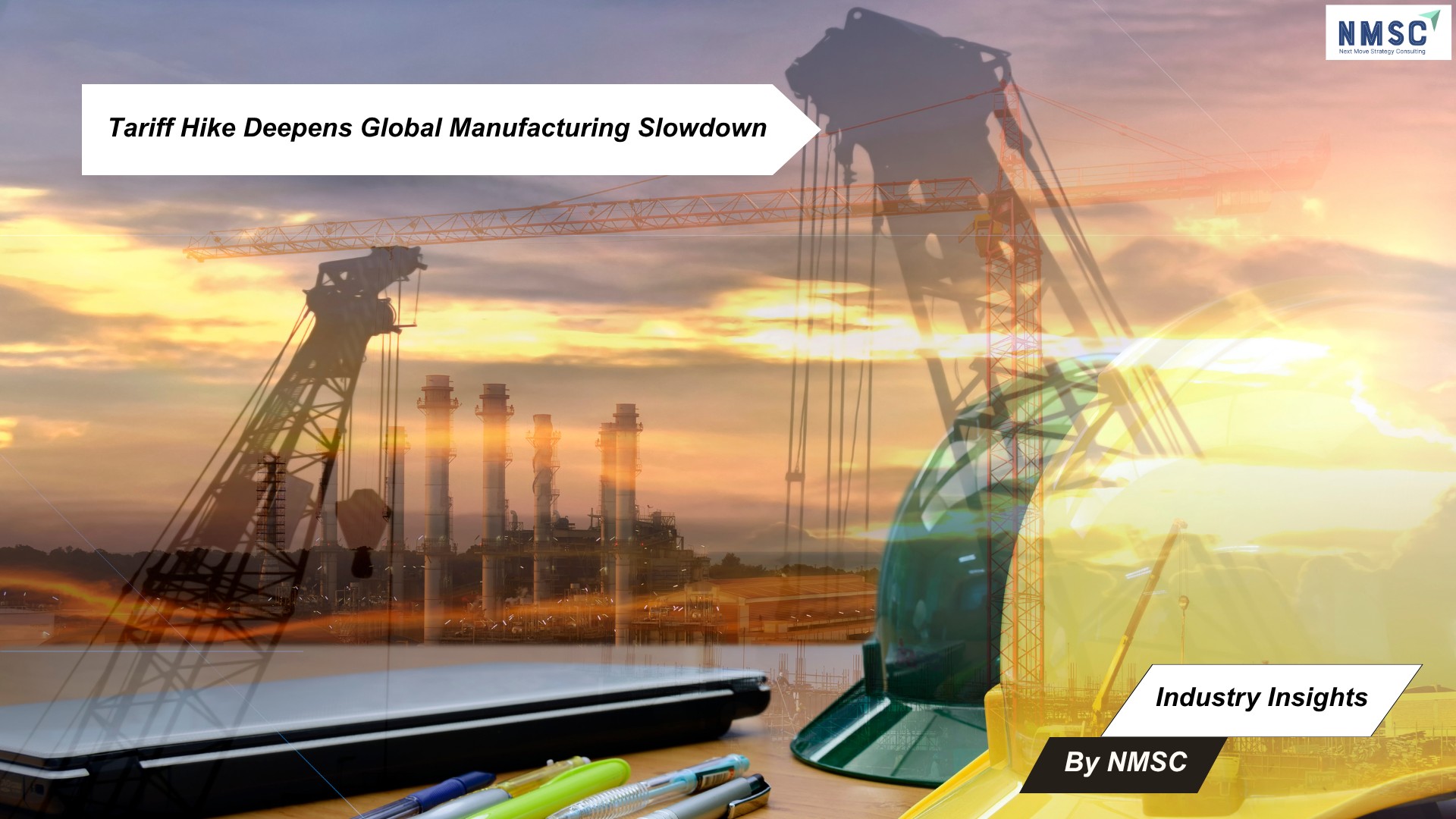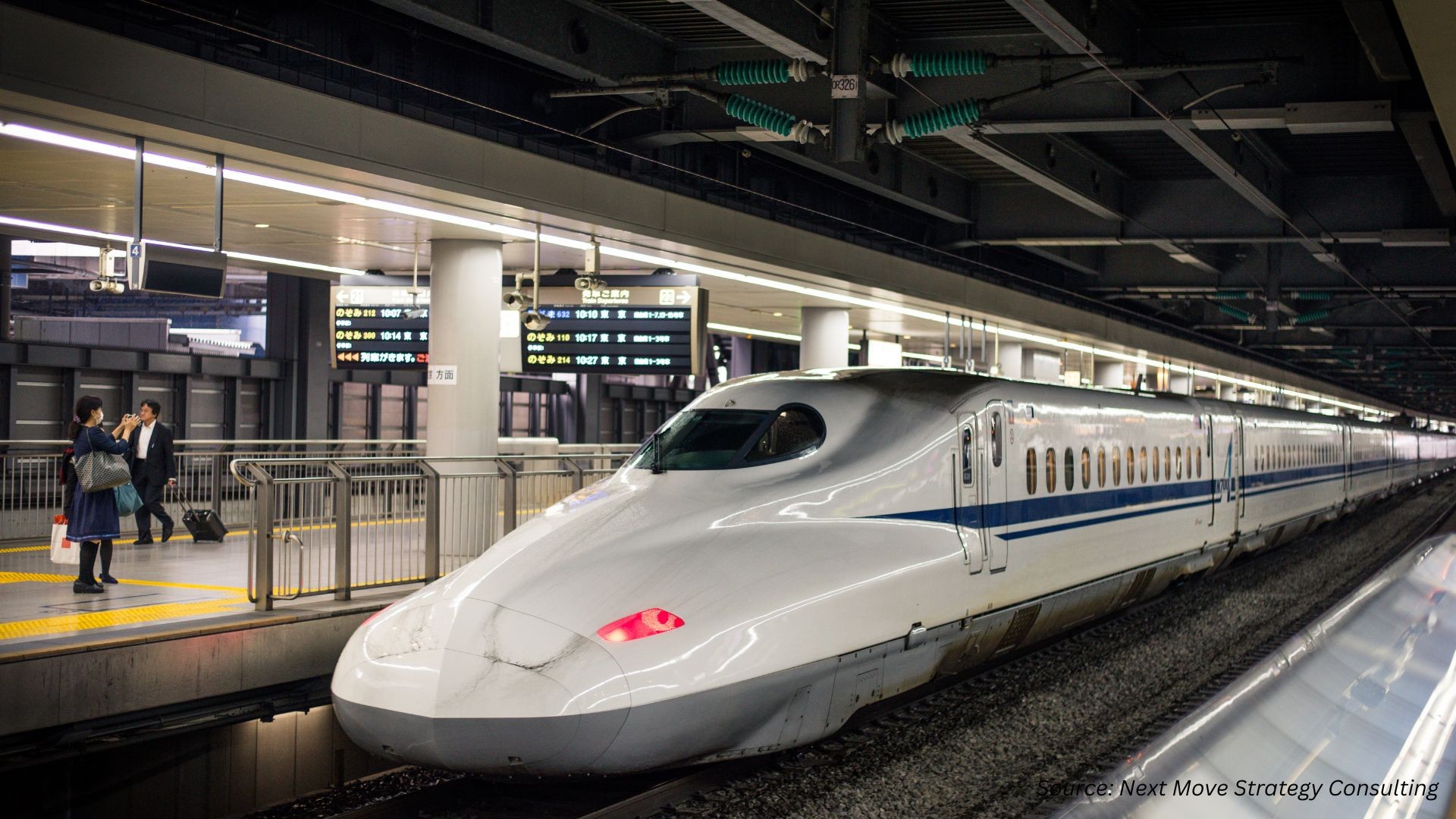Tariff Hike Deepens Global Manufacturing Slowdown
Published: 2025-11-04

Insights from Next Move Strategy Consulting
In an era of intensifying trade barriers, preliminary business surveys for October reveal a widespread slowdown in major manufacturing hubs, compounded by subdued US demand and escalating tariffs under President Donald Trump. This contraction, now persisting for eight months in the US, extends ripples into interconnected sectors, notably dampening momentum in sectors reliant on stable material supplies and export-driven growth.
Trade Barriers Strain Factory Output and Supply Networks
Long-standing challenges in global production have intensified, with tariffs disrupting order inflows and complicating logistics for manufacturers across key economies. US factories, directly impacted by import levies, reported subdued new orders and persistent supply disruptions, fueling ongoing sectoral contraction.
In the euro zone, manufacturing indices underscored persistent stagnation, bolstered only by resilient internal consumption while external demand flagged, particularly from the US and France. The UK saw a temporary uptick, fueled by resumed operations at Jaguar Land Rover post-cyber disruption, yet this isolated gain masks broader export vulnerabilities.
"Details indicate growth is mainly due to solid domestic demand, while new foreign orders continue to send warning signals," noted Paolo Grignani, economist at Oxford Economics.
Regional Variations Highlight Uneven Recovery Prospects
Asia's manufacturing powerhouses faced divergent fortunes. China's activity decelerated, with export orders receding after an initial surge to pre-empt tariffs, as confirmed by both private and official purchasing managers' indices marking a seventh consecutive monthly decline. South Korea mirrored this trend, with falling output and exports underscoring caution despite recent trade overtures.
In contrast, India's sector accelerated on robust local purchasing power, mitigating export setbacks, while Vietnam and Indonesia registered modest gains. Declines persisted in Malaysia and Taiwan, reflecting broader regional headwinds from US policy shifts.
"The PMIs suggest that China's economy lost some momentum in October, with slower growth across manufacturing and construction," observed Zichun Huang, China economist at Capital Economics. "Some of this weakness may reverse in the near term, but any boost to exports from the latest U.S.-China trade 'deal' is likely to be modest and wider headwinds to growth will persist."
Emerging Trade Accords Temper Immediate Risks
Recent diplomatic engagements, including Trump's Asia tour, yielded tentative advances: a one-year tariff deferral with China and reduced duties for South Korean exports. Yet these pacts offer limited relief against fundamental frictions between economic giants, with Beijing monitoring progress toward its 2025 growth goal of approximately 5% absent additional fiscal measures. September trade figures showed China's shipments expanding via alternative markets, even as US-directed volumes plunged 27% annually.
Cascading Effects on Construction Sector Resilience – NMSC Viewpoint
As a market research firm tracking infrastructure dynamics, Next Move Strategy Consulting observes that these manufacturing tremors directly imperil construction pipelines worldwide. In China, the epicenter of global building booms, decelerating factory output may tighten material availability, potentially raising costs and delaying some projects amid subdued investment sentiment.
US tariffs exacerbate this by hiking input prices for imported materials, straining domestic manufacturers already navigating supply bottlenecks. Euro zone stagnation curtails cross-border trade, while Asia's mixed signals—strength in India but weakness elsewhere—may redirect investment toward more resilient domestic markets. Overall, firms must prioritize supply diversification and cost-hedging to sustain project timelines in this tariff-shadowed environment.
Navigating a Fragmented Economic Horizon
With trade uncertainties lingering, manufacturing's October malaise underscores the need for adaptive strategies in linked industries like construction. Policymakers and executives alike face a landscape where domestic buffers provide fleeting solace against global drags, demanding vigilant oversight of tariff trajectories and demand forecasts. This evolving scenario positions forward-looking entities to capitalize on pockets of strength, such as India's vigor, while fortifying against prolonged contractions in tariff-exposed regions.
Source: Reuters
Prepared by: Next Move Strategy Consulting
About the Author
 Sneha Chakraborty is a passionate SEO Executive and Content Writer with over 4 years of experience in digital marketing and content strategy. She excels in creating optimized, engaging content that enhances online visibility and audience engagement. Skilled in keyword research, analytics, and SEO tools, Sneha blends creativity with data-driven insights to deliver impactful results. Beyond her professional work, she enjoys reading, sketching, and nature photography, drawing inspiration from creativity and storytelling.
Sneha Chakraborty is a passionate SEO Executive and Content Writer with over 4 years of experience in digital marketing and content strategy. She excels in creating optimized, engaging content that enhances online visibility and audience engagement. Skilled in keyword research, analytics, and SEO tools, Sneha blends creativity with data-driven insights to deliver impactful results. Beyond her professional work, she enjoys reading, sketching, and nature photography, drawing inspiration from creativity and storytelling.
About the Reviewer
 Sanyukta Deb is an accomplished Content Writer and Digital Marketing Strategist with extensive expertise in content strategy, SEO, and audience engagement. She specializes in building strong brand visibility through data-driven campaigns and impactful, value-added researched content. With a passion for creativity and innovation, she blends strategic thinking with design and communication to craft meaningful digital experiences. Over the years, she has contributed cross-functional marketing projects, driving measurable impact and audience engagement.
Sanyukta Deb is an accomplished Content Writer and Digital Marketing Strategist with extensive expertise in content strategy, SEO, and audience engagement. She specializes in building strong brand visibility through data-driven campaigns and impactful, value-added researched content. With a passion for creativity and innovation, she blends strategic thinking with design and communication to craft meaningful digital experiences. Over the years, she has contributed cross-functional marketing projects, driving measurable impact and audience engagement.
















Add Comment